Gastronomically speaking, few things connote gourmet refinement and excellence more than caviar. The popularity of caviar, and particularly, caviar from the beluga sturgeon, has long been sought after for its succulent, savory and pungent flavors, smooth and creamy texture, and lustrous, black pearl-like appearance. Caviar has long been associated with fine dining, luxury, and indulgence. Traditionally, caviar refers to pasteurized or unpasteurized salt cured fish roe or eggs originating from wild sturgeon in the Caspian Sea and the Black Sea. There are four kinds of caviar including Beluga, Sterlet, Ossetra, and Sevruga. With the exception of the golden Sterlet variety, the color of caviar can be anything from a light silver or brown grey to a dark grey. When it comes to the size of the roe, bigger is usually better.

Persistent over fishing has severely diminished the population of wild sturgeon, causing the United States to ban the importation of wild beluga caviar originating from the Caspian Sea and the Black Sea. Sustainable caviar derived from farm-raised sturgeon present an environmentally beneficial and sustainable alternative to caviar produced by wild caught sturgeon, while sacrificing none of the quality and the taste.
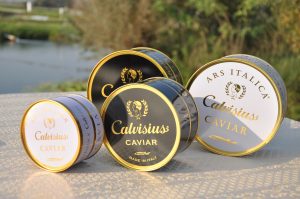
Italy is currently the top producer of farmed caviar in the world. Italy supplies 25 percent of the world’s caviar. Calvisius Caviar has been producing sustainable caviar in Italy since the 1970s. Calvisius oversees both the farming and production of its caviar and this hands on approach guarantees the quality and consistency of Calvisius caviar. Calvisius produces caviar year round. The sturgeon is raised in spring water fed pools and nourished with specially produced feed that are derived from select grains. The caviar is salt-cured using the malassol method. This ensures that the caviar contains no more than 4 percent salt, allowing the natural and delicate flavors of the eggs to come through. Female sturgeon are farmed raised for anywhere between 6 years and 20 years depending on the species of sturgeon and the type of caviar being cultivated. Males are raised for approximately 4 years.

Sturia, the top producer of farmed caviar in France, has been raising sturgeon for the cultivation of caviar for over two decades. Sturia’s fish hatcheries are located in Southwest France near the famed wine region of Bordeaux. Sturia raises its sturgeon in natural ponds using sustainable methods of farming. The malossol style of caviar production allows it to retain its naturally rich, complex, and nutty flavors.
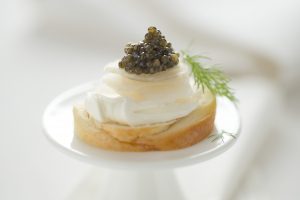
Both Calvisius Caviar and Sturia have decided to bring their quality caviar to the United States market recently and with good reason. The United States is the largest international consumer of caviar after Japan, Russia, Hong Kong and China, and the American appetite for well-crafted farmed caviar is growing. Moreover, the concept of caviar, once seen as a delicacy to be enjoyed almost exclusively only when served on a mother of pearl caviar spoon, when eaten off the back of the hand (both methods preserve the purity of the caviar’s flavor), or when spread on a cracker, is changing. Caviar is being recognized increasingly by the world’s premier chefs, as a versatile complement to a variety of dishes, ranging from freshly shucked oysters to seared Wagyu steak, as well as to wines and cocktails that extend beyond the standard vodka and champagne.
When Europe’s top two farmed caviar producers collaborated with New York City chefs to create caviar inspired menus they both decided to complement many of the courses with Bordeaux whites, reds, and in some cases, rose’s as well. This is not surprising given the fact that Bordeaux remains synonymous with fine quality wines and when it comes to caviar, only the best will do.
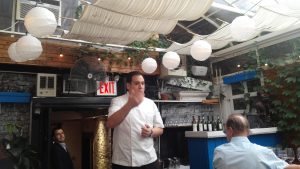
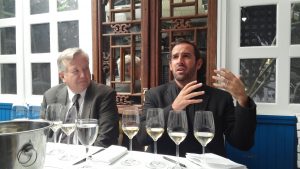
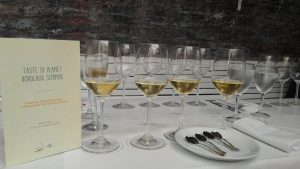
A range of affordable Bordeaux and Bordeaux Superieur were poured with Calvisius Caviar inspired dishes prepared by Chef Nelson Maldonado of Bobo New York City. Planet Bordeaux U.S. Ambassador Michael Madrigale demonstrated the versatility of both Bordeaux and caviar when it comes to innovative and creative pairing possibilities.
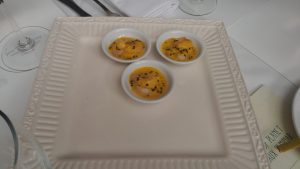



Small plates including a Florida rock shrimp with sauteed garlic, fresno peppers and Calvisius Caviar Siberian, an organic salmon belly with mirin, dashi, soy cream, and Calvisius Caviar Sevruga, a beef tenderloin tartare with cornichons, smoked paprika and Calvisius Caviar Tradition Prestige, and Beau Soleil half oysters with a cucumber mignonette and Calvisius Caviar Oscietra Classic were served with Bordeaux blancs, rose’s and reds such as a Dourthe La Grande Cuvee 2015, Bordeaux Blanc, a Clarendelle Blanc 2013, Bordeaux Blanc, a Chateau De Lardiley 2015, Bordeaux Rose’, and a Cheval Quancard Reserve 2012, Bordeaux Rouge.
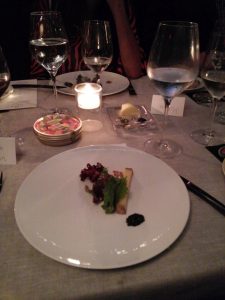
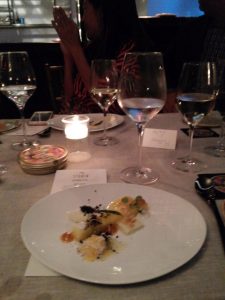

Chef Nicolas Abello of L’Appart, The Chef’s Table at Le District prepared a Sturia caviar inspired menu with dishes ranging from a scallop crudo with citrus and Sturia Caviar Jasmin to a squab with soja and Sturia Caviar Origin. Bordeaux including a refreshing and citrus Chateau Villa, Bel Air Grave, 2014 and a soft, well rounded and fruity Chateau Teyssier, Montagne-Saint-Emilion, 2010, were among the wines poured as complements.
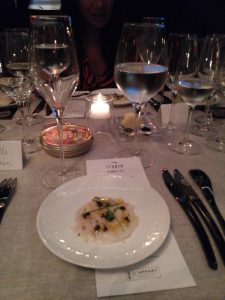
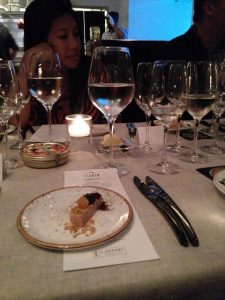
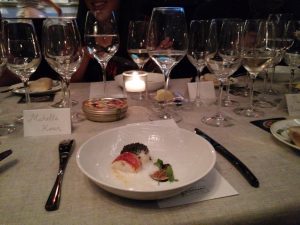
The adaptability of caviar to dishes that reflected everything from Asian to Mediterranean flavors, as well as to Bordeaux characterized by many different styles (crisp and citrus, soft and floral, and fruity, well-rounded, and full of sweet spice), demonstrated the breadth of gastronomic possibilities that are in store for caviar.

Be First to Comment